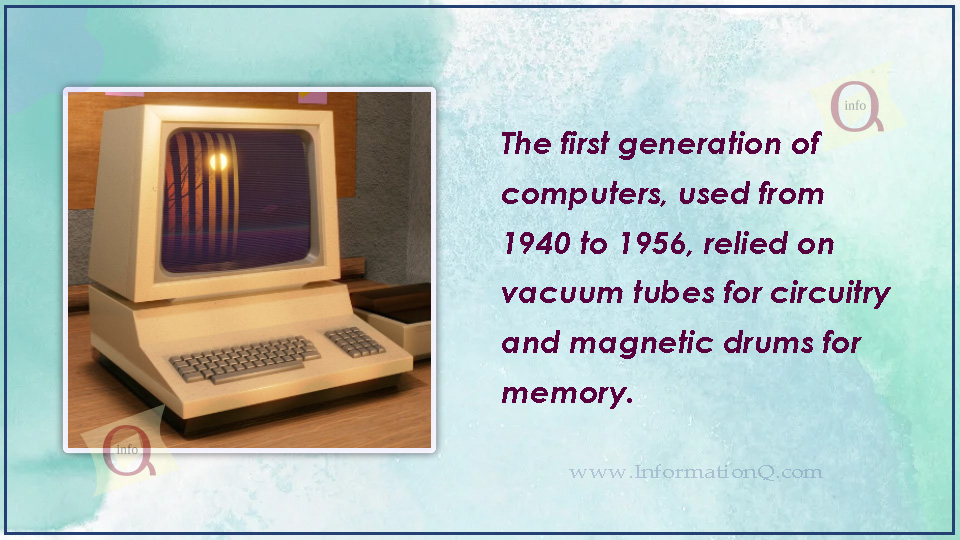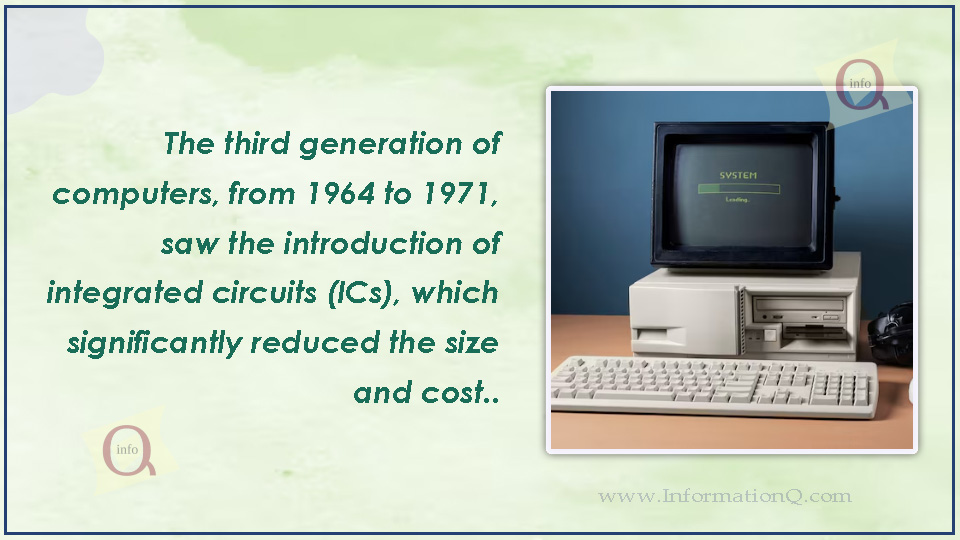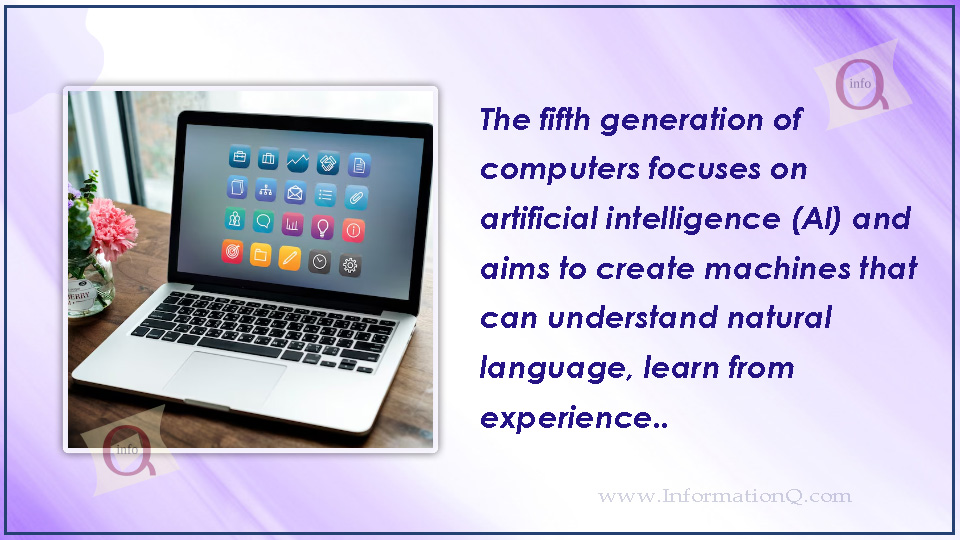Over the years, numerous computing devices have been invented to solve various problems. The history of computer development is often categorized by different generations, each marked by significant technological advancements. These advancements have led to progressively smaller, cheaper, more powerful, and efficient devices.

The history of computer development is often discussed in terms of different generations of computers, as listed below:
- First Generation Computers (1940 – 1956)
- Second Generation Computers (1956 – 1963)
- Third Generation Computers (1964 – 1971)
- Fourth Generation Computers (1971 – 1980)
- Fifth Generation Computers (Present and Future)
First Generation Computers (1940 – 1956)
The first generation of computers, used from 1940 to 1956, relied on vacuum tubes for circuitry and magnetic drums for memory. These machines were massive, taking up entire rooms, and were very expensive to operate. They generated a lot of heat, which often led to malfunctions. The ENIAC and UNIVAC are notable examples from this era. Programming was done in machine language, the most basic level of code, which made the process cumbersome and time-consuming.



Second Generation Computers (1956 – 1963)
From 1956 to 1963, the second generation of computers transitioned from vacuum tubes to transistors, making them smaller, faster, and more energy-efficient. These computers used magnetic core memory, which allowed quicker access to data. They also introduced assembly language, which simplified the programming process compared to the machine language used previously.
Third Generation Computers (1964 – 1971)
The third generation of computers, from 1964 to 1971, saw the introduction of integrated circuits (ICs), which significantly reduced the size and cost of computers while enhancing their speed and reliability. These computers could execute billions of instructions per second and supported higher-level programming languages like COBOL and FORTRAN.



Fourth Generation Computers (1971 – 1980)
The fourth generation of computers, spanning from 1971 to 1980, was characterized by the development of microprocessors. Microprocessors integrated all the functions of a central processing unit (CPU) onto a single chip, leading to the creation of smaller, faster, and more affordable computers. This era saw the rise of personal computers (PCs) and the use of high-level programming languages such as C, C++, and Java. The Intel 4004 microprocessor, released in 1971, is a notable example from this period.
Fifth Generation Computers (Present and Future)
The fifth generation of computers focuses on artificial intelligence (AI) and aims to create machines that can understand natural language, learn from experience, and make autonomous decisions. These computers, often referred to as supercomputers, feature multiple CPUs working together to perform complex tasks quickly. Applications include robotics, defense systems, and advanced scientific research. Notable examples are IBM’s Watson and Google’s DeepMind, which showcase the potential of AI in transforming various industries.



Conclusion
The journey through the generations of computers highlights the rapid pace of technological advancements and their significant impact on society. Each generation has built upon the previous one, leading to more sophisticated and capable machines that continually push the boundaries of what computers can achieve.
Computer Repair and Common Problems.
Basic Computer Tutorial for Beginners
Generations of Computers and Future Computer
FAQs(Questions & Answers): Generations of Computers
Q1. What are the generations of computers?
Ans: Computers are categorized into five generations based on their technological advancements and features. Each generation represents significant improvements in computer technology.
Q2. What are the key characteristics of the First Generation of computers?
Ans: The First Generation (1940s-1950s) featured vacuum tubes for circuitry and magnetic drums for memory. These computers were large, expensive, and consumed a lot of power.
Q3. What innovations defined the Second Generation of computers?
Ans: The Second Generation (1950s-1960s) saw the introduction of transistors, which replaced vacuum tubes. This led to smaller, more reliable, and energy-efficient computers.
Q4. How did the Third Generation of computers improve upon previous generations?
Ans: The Third Generation (1960s-1970s) introduced integrated circuits (ICs), which significantly reduced the size and cost of computers while increasing their performance and reliability.
Q5. What are the main features of the Fourth Generation of computers?
Ans: The Fourth Generation (1970s-present) is characterized by the use of microprocessors, which are integrated circuits that contain the computer’s central processing unit (CPU). This generation also saw the development of personal computers and advanced software applications.
Q6. What advancements are associated with the Fifth Generation of computers?
Ans: The Fifth Generation (present and beyond) focuses on artificial intelligence (AI) and advanced computing technologies, such as quantum computing and neural networks. These computers aim to understand and process human language, learn from data, and solve complex problems.
Q7. What is the significance of understanding the generations of computers?
Ans: Understanding the generations of computers helps in appreciating the evolution of technology and the advancements that have shaped modern computing. It provides insights into how computational power, efficiency, and functionality have improved over time.
Q8. Where can I find more information about the history of computer technology?
Ans: For more detailed information about the history of computers and their generations, you can refer to various educational resources, history books, and specialized technology websites.
Leave a Reply